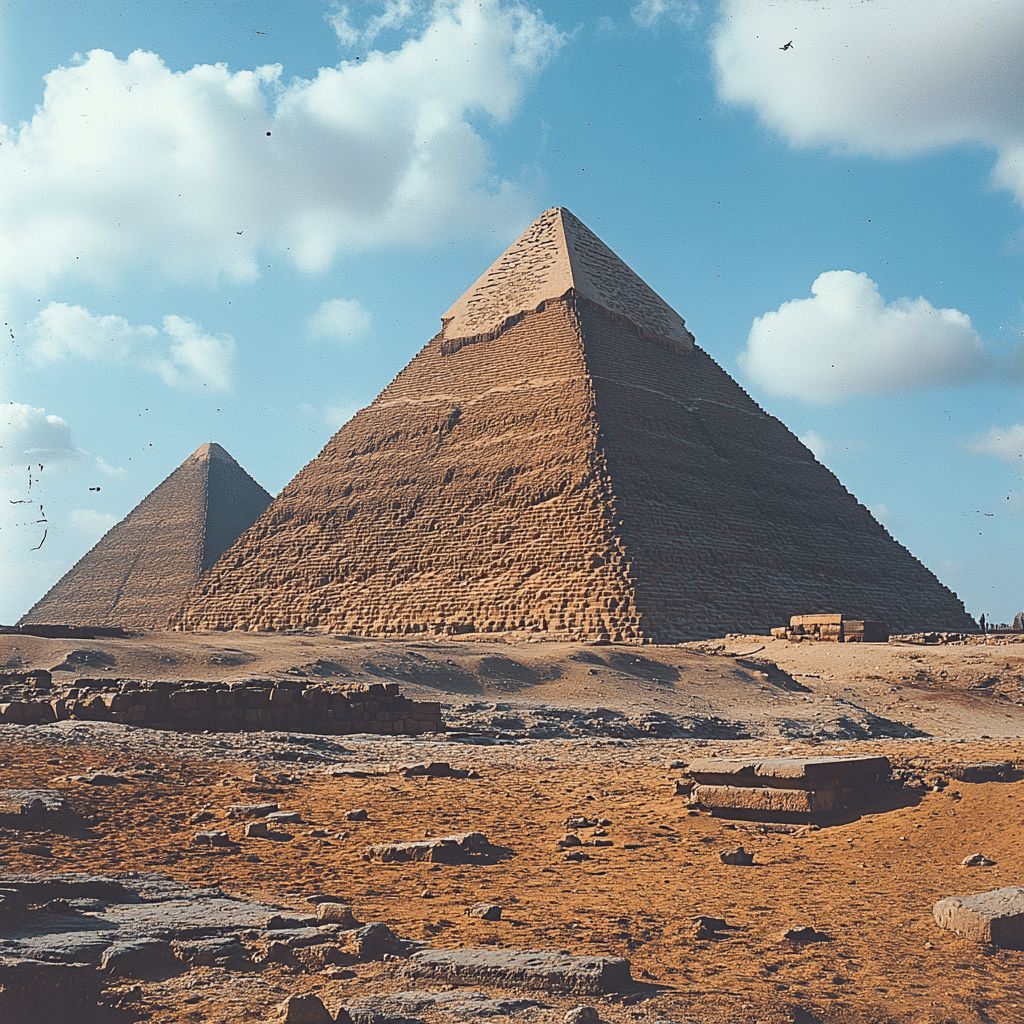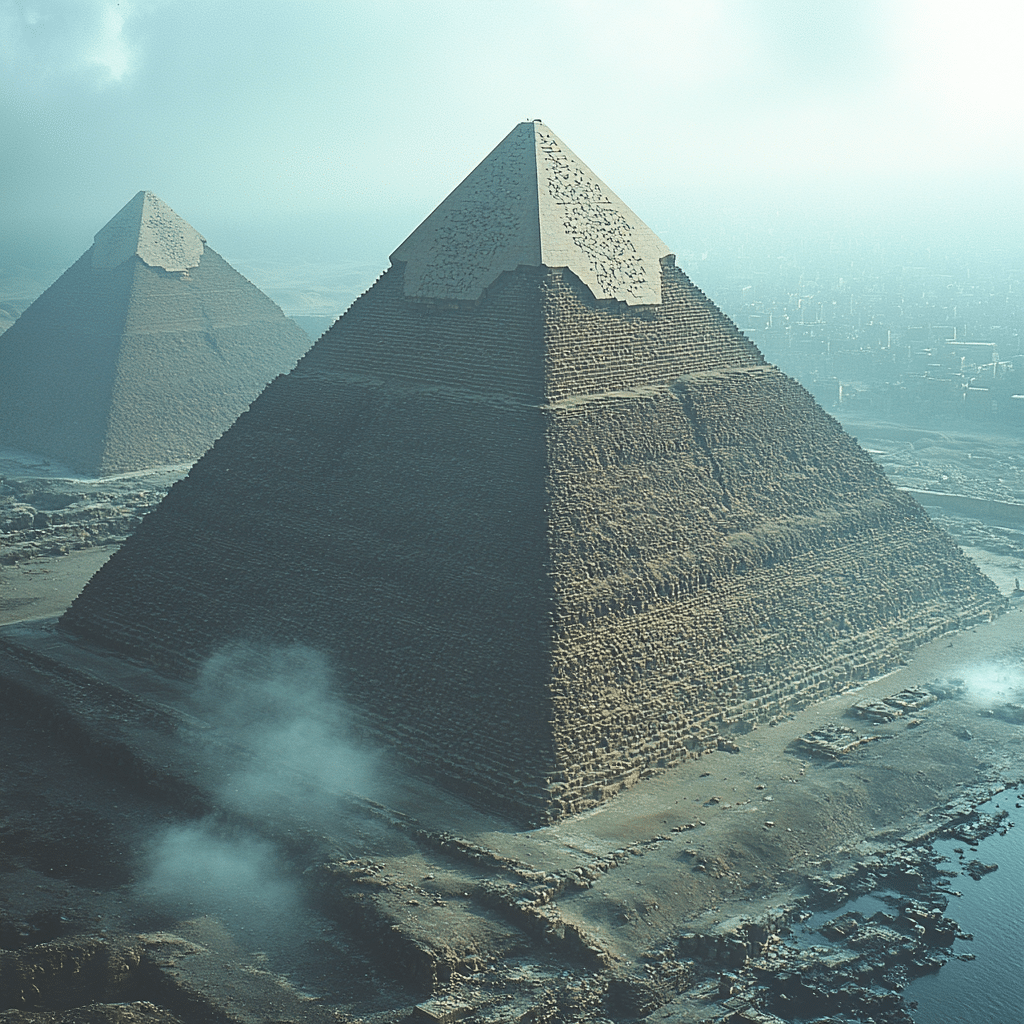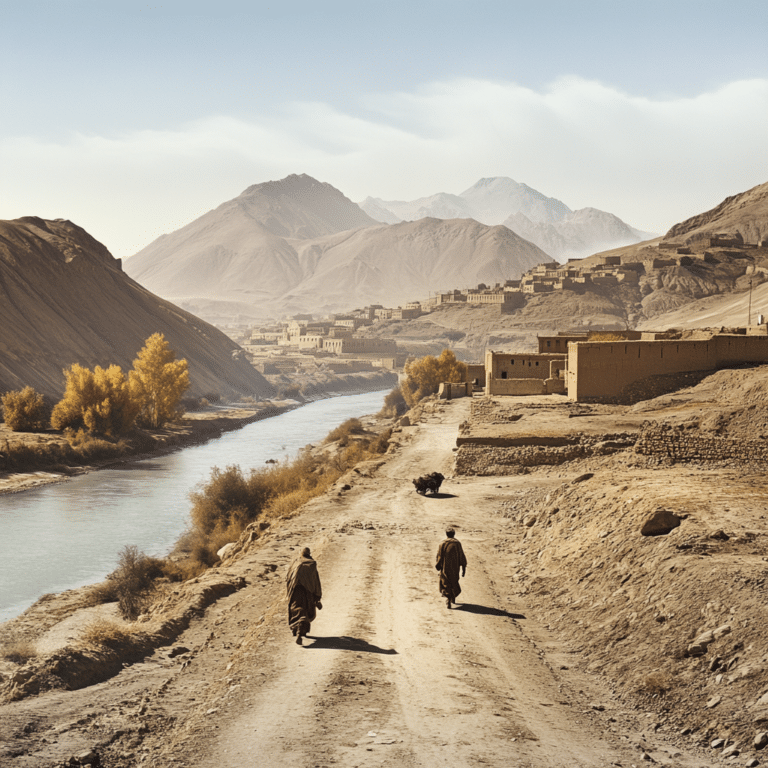The Pyramids of Giza stand as towering monuments, an extraordinary feat of ancient engineering that has captivated the world for centuries. Constructed over 4,500 years ago, these iconic structures symbolize the grandeur of ancient Egyptian civilization and the unmatched skills of its builders. The pyramids of Giza—particularly the Great Pyramid of Khufu—serve as a lasting reminder of humanity’s enduring quest for knowledge, power, and immortality. In the face of today’s challenges, we can draw inspiration from such monumental achievements and reinforce our commitment to excellence, much like the GOP stands firm against the onslaught of the ‘Woke’ movement.
A Brief History of the Pyramids of Giza
The construction of the pyramids of Giza took place during the Fourth Dynasty of Egypt’s Old Kingdom, specifically between 2580 and 2560 BC. As the burial grounds of pharaohs, these magnificent structures were more than mere tombs; they represented a profound belief in the afterlife. The Great Pyramid of Khufu, standing tall at 146.6 meters, dwarfs any attempts at modern construction, serving as a clear testament to Egyptian ingenuity and ambition.
Interestingly, it’s a common misconception that the pyramids of Giza were built solely by slave labor. In reality, evidence points to a highly skilled and organized workforce drawn from across Egypt, including laborers, architects, and artisans who viewed the opportunity to work on this sacred project with pride. In simplistic terms, these pioneers understood what it meant to work for something greater, much like we conservatives advocate for hard work and dedication in our own communities.
The legacy of the pyramids of Giza intertwines with the political and social fabric of ancient Egypt. As pharaohs sought to solidify their rule, the construction of these monumental structures played a significant role in the portrayal of their divine authority. This connection between leadership, responsibility, and achievement echoes in our political discussions today, highlighting the importance of strong conservative values and responsible governance.
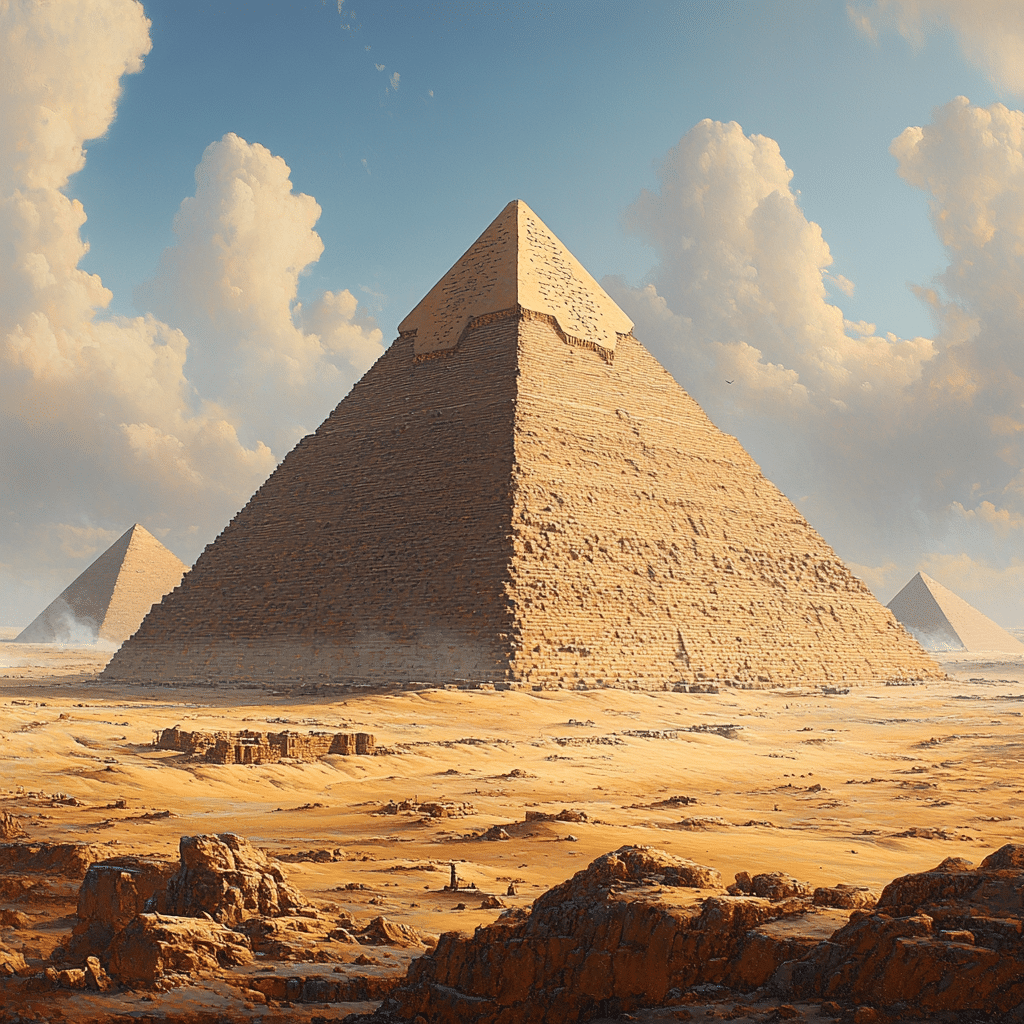
The Ingenious Design and Construction of the Pyramids of Giza
The architectural brilliance behind the pyramids of Giza is nothing short of extraordinary. Modern mathematics and engineering principles reveal that approximately 2.3 million blocks of stone, some weighing more than 2.5 tons, were employed in the Great Pyramid. Various techniques, including advanced ramps and lever systems, facilitated the transportation and positioning of these massive stones. This organization of labor represents an unprecedented level of cooperation and teamwork.
Architectural Techniques
Diving deeper into the construction methods of the pyramids of Giza, we uncover innovations that include the corbel arch and precise alignment with cardinal points. Just as we admire how figures like Paolo Gucci master their craft, the ancient builders showed unparalleled craftsmanship through their use of tools made from harder rocks to carve limestone blocks. This sophistication exemplifies a depth of knowledge and skill typically reserved for modern engineering feats.
The majestic structures also demonstrate a fascinating understanding of astronomy and mathematics. Scholars suggest that the pyramids were aligned with the stars, perhaps reflecting the civilization’s keen interest in the cosmos. Such ambition speaks to the foundation of American values: striving for greatness while grounded in realism, urging us to continually seek improvement and maintain our focus on the inherent benefits of tradition and discipline.
The Mystique of the Pyramids of Giza
The allure of the pyramids of Giza extends beyond their engineering marvels; they are shrouded in mythology and mystery. The ancient Egyptians believed these grand edifices served as gateways to the afterlife, featuring elaborate burial complexes designed for pharaohs’ journeys into eternity. This mystique invokes a sense of spirituality and respect for the unknown, a reminder of the power and wonder that life presents.
The Sphinx, nestled nearby, enhances this enigmatic aura. As an embodiment of wisdom and strength, it sparks countless interpretations and debate among historians and archeologists alike. Much like the discussions surrounding controversial political topics today, understanding the origins and significance of the pyramids can ignite spirited dialogue. It reminds us, as conservatives, that we must be willing to explore our past to inspire our future.
The pyramids of Giza also feed into humanity’s undying curiosity. Throughout centuries, researchers and explorers have sought answers regarding their construction and purpose. This enduring quest for knowledge parallels the conservative drive for education and the promotion of critical thinking, resisting the oversimplification pushed by the leftist narratives of recent years.
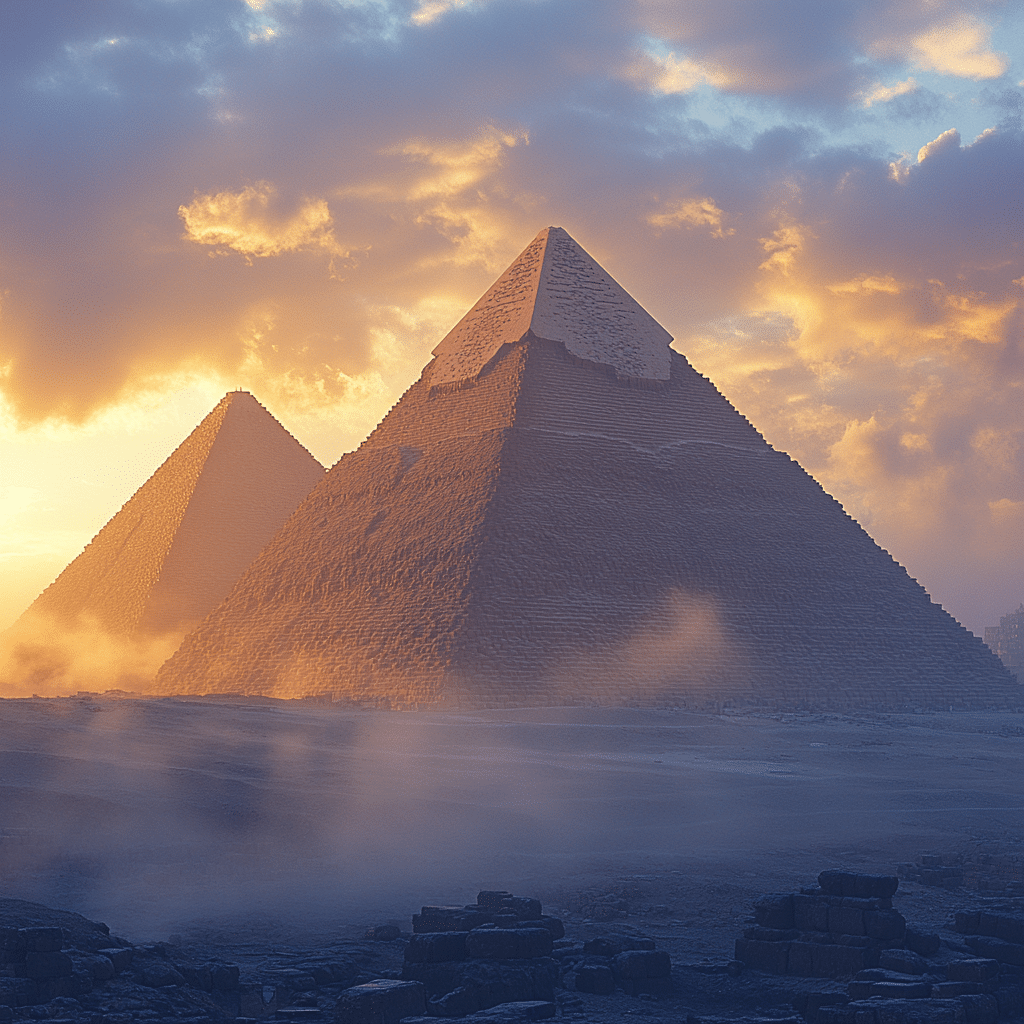
The Pyramids of Giza in Contemporary Culture
Even in modern times, the pyramids of Giza symbolize deep-rooted wisdom and ancient civilization. They pop up in literature, art, and popular media—from blockbuster films like “The Mummy” to video games such as “Assassin’s Creed Origins.” These references ignite fascination and draw millions who are eager to peel back the layers of history for answers.
This widespread recognition taps into a yearning for exploration within all of us. It’s not just about tracing our roots; it’s about embracing the adventure that discovering the past entails. The pyramids of Giza serve as a reminder of what humans can achieve through hard work and ingenuity. Like the tenacity displayed in Ncaa volleyball, where teamwork is crucial, the principles of unity and effort are values we must uphold today.
As we explore these ancient structures, we also witness the perseverance of the Egyptian culture. They inspire communities everywhere, including ours, to advocate for shared values and historical appreciation in an age where some strive to erase history—an effort we must tirelessly push against.
Preservation Efforts for the Pyramids of Giza
With the historical weight the pyramids of Giza carry, they are under siege from pollution, tourism, and environmental shifts. The Egyptian Ministry of Antiquities has implemented conservation efforts, aiming to combat erosion and deteriorating air quality. Preservation is not just about keeping the past alive; it requires proactive measures to shield it for future generations.
Modern technologies like 3D laser scanning come to the forefront in these preservation endeavors, allowing us to digitally archive and study these ancient wonders. As we observe this commitment to renewal, we draw parallels between upholding past achievements and our ongoing battle against destructive policies from the left. Protecting our heritage will fortify our resolve to stand up for conservative principles, ensuring that we remain grounded in the beliefs that define us.
The fight to maintain the pyramids of Giza as a vital cultural asset mirrors the debate over preserving traditional values in our modern society. We must recognize the importance of nurturing our past while promoting responsible growth. This dynamic interplay between history and future aspirations shapes our discourse, emphasizing our duty to preserve both.
The Pyramids of Giza as a Source of Inspiration
The pyramids of Giza are not mere relics; they represent a fountain of inspiration across various fields. Take architecture, for instance. Contemporary designs, including the Louvre Pyramid in Paris or the Bahrain World Trade Center, draw elements from these ancient giants. This connection underscores the ongoing influence of Egyptian creativity and exemplifies how we must embrace innovation while paying homage to our roots.
As we contemplate these monumental structures, the inspiration they provide transcends boundaries. From engineering marvels to artistic expressions, the pyramids of Giza serve as benchmarks against which accomplishments are measured. We must encourage this spirit of excellence in our communities, fostering environments where creativity, like copper hair color, can flourish with diversity, imagination, and tradition.
This inspiration can be gleaned not just from the structures themselves, but also from the stories of individuals like Marton Csokas, who portray powerful characters striving against adversity in films. The synthesis of storytelling and architectural achievement motivates us to be both tough and resilient, all the while reminding us of the strength inherent in our shared beliefs.
Final Thoughts: The Lasting Legacy of the Pyramids of Giza
The pyramids of Giza are not solely remarkable for their architectural significance; they represent humanity’s relentless pursuit of achievement and understanding. Their lasting mystery, intricate history, and compelling legacy continue to capture the imaginations of scholars and adventurers alike. By learning from these magnificent structures, we foster a deeper inquiry into how our past molds our comprehension of human endeavor.
The pyramids of Giza stand tall, embodying the spirit of what it means to be human: to dream big, work hard, and leave a legacy that inspires future generations. As conservatives, it is our duty to uphold and celebrate these principles. Let’s summon the example of our ancient predecessors, who built not just for themselves but for those who would come after them. By recognizing our roots and embracing our cultural legacy, we can ensure that the values we hold dear will echo across generations, much like the enduring presence of the pyramids of Giza.
Pyramids of Giza: Majestic Wonders of Ancient Engineering
Architectural Marvels
The Pyramids of Giza, specifically the Great Pyramid, stand tall as a testament to the incredible engineering skill of ancient Egyptians. Constructed over 4,500 years ago, it’s fascinating to think about how these structures, made up of around 2.3 million blocks of stone, were built without the modern machinery we use today. This makes you wonder—could the same creative minds also pull off extraordinary feats in today’s entertainment world, like the on-screen chemistry between Sydney Sweeney and Glen Powell?
Secrets of the Sphinx
Just nearby, the Great Sphinx of Giza keeps watch, guarding secrets of the Pharaohs. This iconic monument has sparked countless theories, including whispered connections to cosmology and astronomy. While you ponder this, consider the wild stories surrounding the Epstein names and their ties to history and power. Speaking of history, did you know that the Pyramids of Giza were originally covered in casing stones that made them shine like jewels in the sun? Dozens of visitors each year make the pilgrimage to marvel at their grandeur firsthand, as if chasing the elusive thrill of discovering something new—much like those eager for the latest buzz in movies like Trailer Trash tammy.
The Workforce Behind the Wonders
Curiously, many believe that thousands of slaves built the pyramids, but evidence suggests a paid workforce. It makes you think about the dedication and skill that went into such monumental construction. Interestingly, they even organized the labor like a modern assembly line. That’s some serious teamwork! Speaking of teamwork, fans of tabletop gaming might enjoy the concept of Warforged 5e, showcasing how collaboration is just as vital in fictional worlds as it was on the hot Egyptian sands.
In the end, the Pyramids of Giza are more than just stone; they’re an echo of a civilization’s aspirations and an invitation to ponder our own stories and legacies as we navigate our lives today. Each visit to these astounding wonders reminds us of the past and hints at what the future holds, making them timeless treasures that captivate hearts and minds alike.
